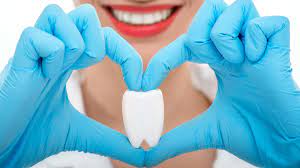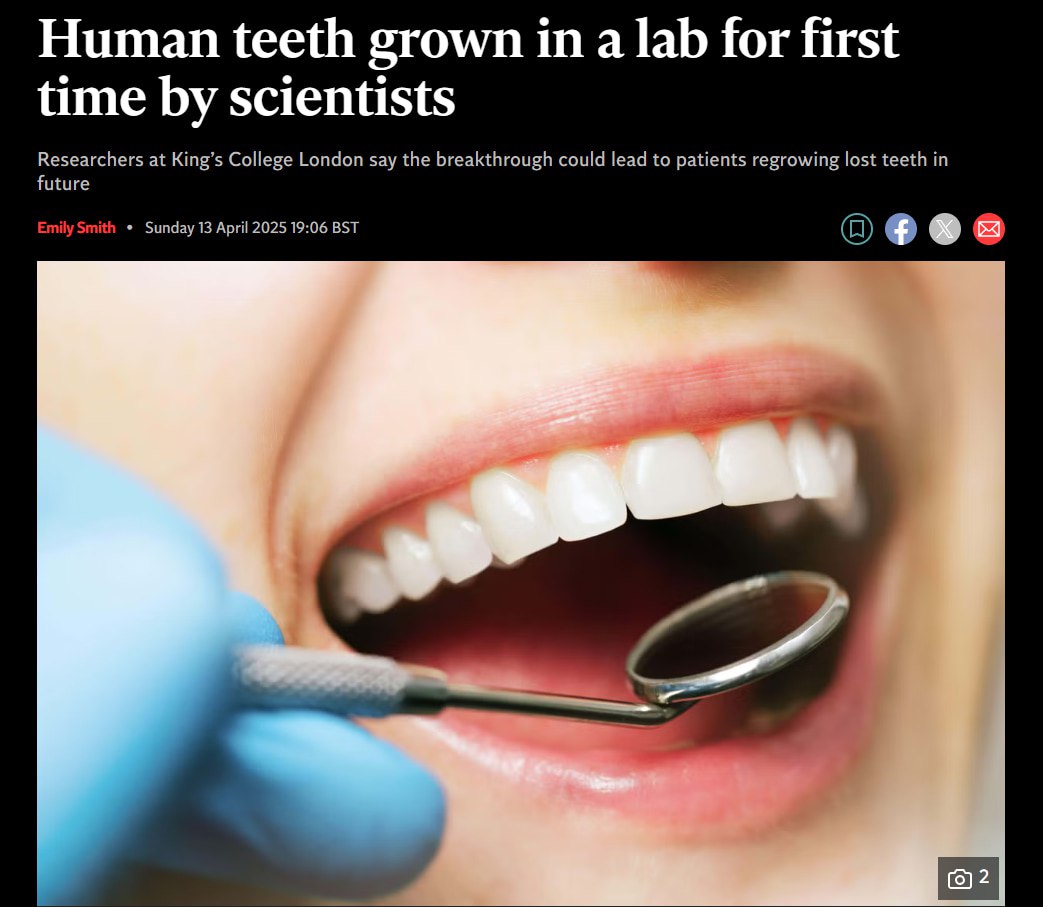In a monumental leap forward for medical science, British researchers have achieved what was once thought impossible: they have successfully regrown a human tooth using the patient’s own cells.
This pioneering technology not only restores lost teeth but also promises a future where dental care is more natural, durable, and accessible. The breakthrough, which allows a tooth to seamlessly integrate into the jaw, resist rejection, and even self-repair, is being hailed as a game-changer in regenerative medicine and dentistry.
A New Era in Dental Science
The innovative technique hinges on the power of stem cells—versatile cells capable of developing into various tissues in the body.
 Scientists extract these cells from the patient, typically from sources like bone marrow or dental pulp, and use advanced biotechnological methods to guide their transformation into a fully functional tooth.
Scientists extract these cells from the patient, typically from sources like bone marrow or dental pulp, and use advanced biotechnological methods to guide their transformation into a fully functional tooth.
Once cultivated in a controlled environment, the tooth is implanted into the patient’s jaw, where it naturally takes root and integrates with the surrounding bone and tissue.
What sets this method apart from existing dental solutions is its compatibility with the human body. Traditional dental implants, while effective, are foreign objects that can occasionally lead to complications such as rejection or infection.
In contrast, a tooth grown from the patient’s own cells is recognized as part of the body, drastically reducing the risk of adverse reactions. Moreover, this bioengineered tooth is not a static structure—it possesses the remarkable ability to regenerate. Minor damage, such as chips or cracks, can heal over time, mimicking the body’s natural repair processes.
The Science Behind the Breakthrough
 The process begins with the isolation of stem cells, which are then cultured in a lab to form dental tissue. Researchers use a combination of growth factors and scaffolds—temporary frameworks that mimic the structure of a tooth—to guide the cells into developing the complex architecture of enamel, dentin, and pulp. This bioengineered tooth is then surgically placed into the patient’s jaw, where it stimulates the surrounding bone to anchor it securely.
The process begins with the isolation of stem cells, which are then cultured in a lab to form dental tissue. Researchers use a combination of growth factors and scaffolds—temporary frameworks that mimic the structure of a tooth—to guide the cells into developing the complex architecture of enamel, dentin, and pulp. This bioengineered tooth is then surgically placed into the patient’s jaw, where it stimulates the surrounding bone to anchor it securely.
The self-repairing capability of these teeth is particularly groundbreaking. Scientists have noted that the regenerated teeth contain living cells that can respond to damage by depositing new layers of dentin, the hard tissue beneath the enamel. This regenerative potential could significantly extend the lifespan of the tooth, reducing the need for repeated dental interventions.
Also read: Scientists Took Swabs of Toothbrushes and Were Shocked by the Hundreds of Viruses They Found
Transforming Dental Care
For decades, the loss of a tooth has meant relying on bridges, dentures, or titanium implants—solutions that, while functional, have limitations.
 Dentures can be uncomfortable and require regular maintenance, while implants involve invasive surgery and a lengthy recovery period.
Dentures can be uncomfortable and require regular maintenance, while implants involve invasive surgery and a lengthy recovery period.
Even the most advanced implants cannot replicate the natural feel or adaptability of a living tooth. The new regenerative technology addresses these shortcomings by offering a solution that is as close to nature as science can achieve.
Beyond functionality, the aesthetic benefits are significant. Regrown teeth blend seamlessly with existing teeth in terms of color, shape, and alignment, ensuring a natural appearance. This is particularly important for patients who prioritize both health and confidence in their smile.
Also read:
- Scientists Reverse Alzheimer's Synapse Damage in Mice
- Scientists Intrigued by Discovery of Light That Can Cast a Shadow
The Road Ahead
 While the successful regrowth of a tooth in a human patient is a major milestone, the technology is still in its early stages. Researchers are working to refine the process, reduce costs, and make it widely available.
While the successful regrowth of a tooth in a human patient is a major milestone, the technology is still in its early stages. Researchers are working to refine the process, reduce costs, and make it widely available.
Current challenges include scaling up the production of bioengineered teeth and ensuring the procedure is viable for patients of all ages and health conditions. For instance, older patients may have fewer viable stem cells, which could complicate the process.
Additionally, regulatory approval and clinical trials will be necessary to confirm the safety and efficacy of the treatment on a larger scale. However, the potential applications extend far beyond dentistry. The ability to grow complex organs or tissues from a patient’s own cells could pave the way for advancements in other fields, such as orthopedics or cardiology.
A Vision for the Future
 The implications of this breakthrough are profound. In the near future, losing a tooth could become a minor inconvenience rather than a lifelong challenge.
The implications of this breakthrough are profound. In the near future, losing a tooth could become a minor inconvenience rather than a lifelong challenge.
Patients might visit a dental clinic to have their cells collected, wait a few weeks for their new tooth to be grown, and then have it implanted in a straightforward procedure.
The result would be a tooth that looks, feels, and functions like the one they lost — potentially for the rest of their life.
Moreover, this technology aligns with the growing trend toward personalized medicine, where treatments are tailored to an individual’s unique biology. By harnessing the body’s own regenerative capabilities, scientists are not only solving dental problems but also redefining what is possible in healthcare.
Conclusion
The successful regrowth of a tooth using a patient’s own cells is a testament to the power of modern science to solve age-old problems. British researchers have opened the door to a new era in dentistry, where teeth can be restored naturally, durably, and with unprecedented precision.
As this technology evolves, it promises to transform smiles and lives around the world, proving that the future of healthcare is not just coming—it’s already here.






